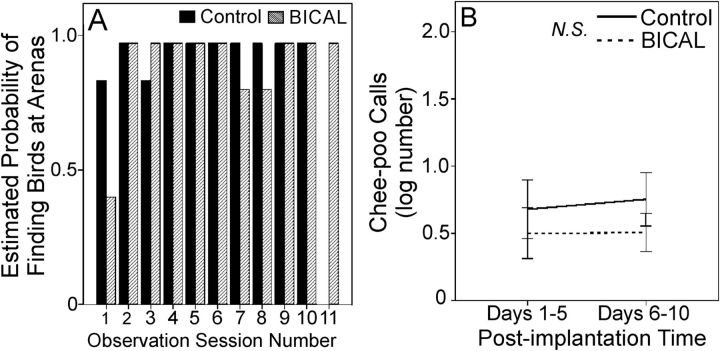Figure 2.
Effects of peripheral AR antagonism on behavior associated with male social arousal and motivation. A, Estimated probability that the individual observing adult male behavior located the target male at its respective display arena. Values at 1.0 represent 100% estimated probability of relocation, whereas values at 0.0 represent 0% estimated probability of relocation. Each bar represents the estimate probability as calculated by our statistical model (see Materials and Methods), and there was no difference in the probability of relocating BICAL-treated birds during the experiment compared with controls (P > .05). B, Average number of chee-poo calls adult male birds broadcast at or near their arena. The N.S. notation within the legend denotes no effect of BICAL treatment (P > .05). Chee-poo data represent means ± 1 SEM. In both graphs, black bars and solid lines represent controls, whereas hatched columns and dashed lines represent BICAL treated birds.

